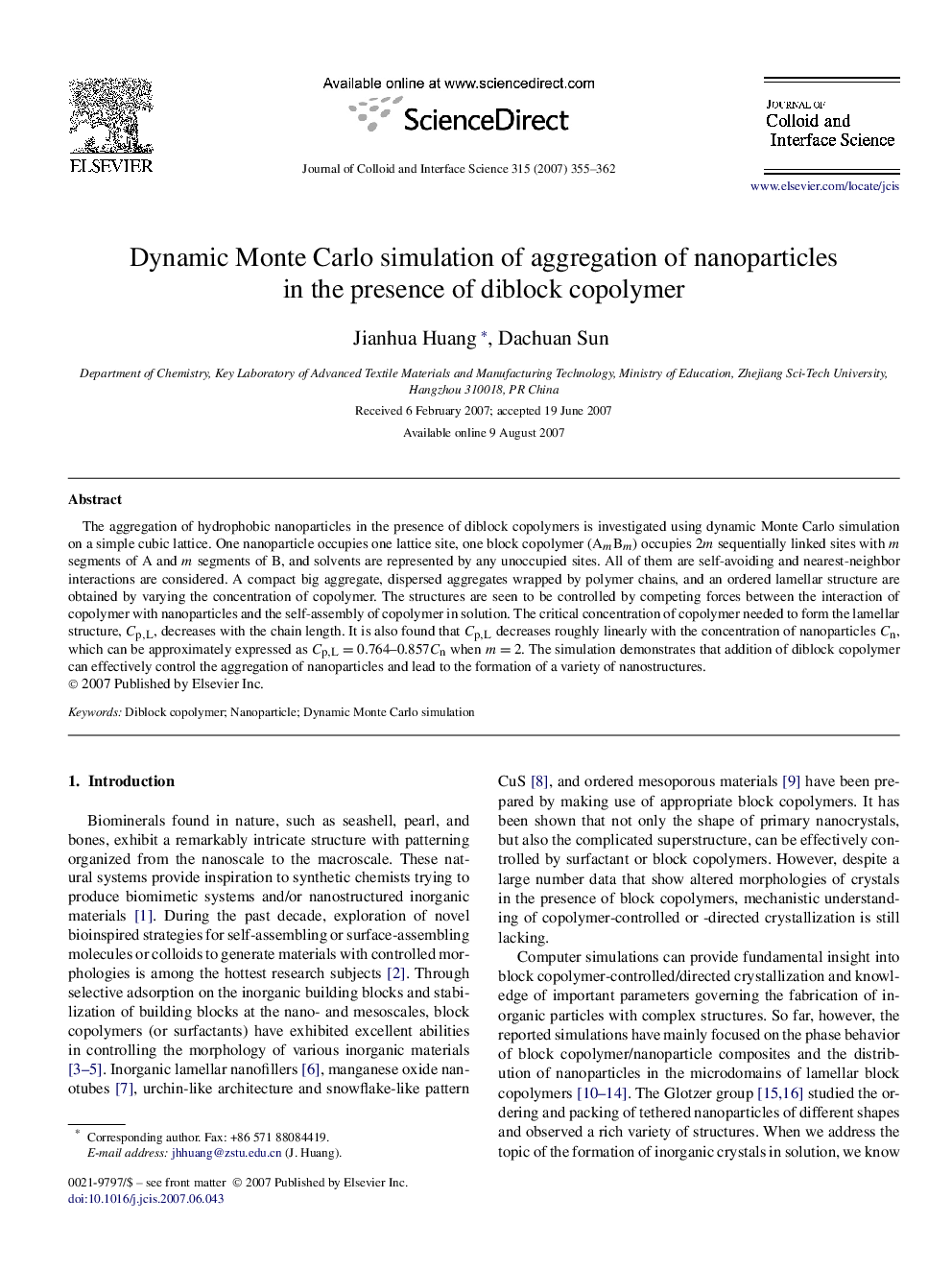| Article ID | Journal | Published Year | Pages | File Type |
|---|---|---|---|---|
| 612296 | Journal of Colloid and Interface Science | 2007 | 8 Pages |
The aggregation of hydrophobic nanoparticles in the presence of diblock copolymers is investigated using dynamic Monte Carlo simulation on a simple cubic lattice. One nanoparticle occupies one lattice site, one block copolymer (AmBm) occupies 2m sequentially linked sites with m segments of A and m segments of B, and solvents are represented by any unoccupied sites. All of them are self-avoiding and nearest-neighbor interactions are considered. A compact big aggregate, dispersed aggregates wrapped by polymer chains, and an ordered lamellar structure are obtained by varying the concentration of copolymer. The structures are seen to be controlled by competing forces between the interaction of copolymer with nanoparticles and the self-assembly of copolymer in solution. The critical concentration of copolymer needed to form the lamellar structure, Cp,LCp,L, decreases with the chain length. It is also found that Cp,LCp,L decreases roughly linearly with the concentration of nanoparticles CnCn, which can be approximately expressed as Cp,L=0.764–0.857CnCp,L=0.764–0.857Cn when m=2m=2. The simulation demonstrates that addition of diblock copolymer can effectively control the aggregation of nanoparticles and lead to the formation of a variety of nanostructures.
Graphical abstractThe aggregation of hydrophobic nanoparticles in the presence of diblock copolymers A2B2 is investigated using dynamic Monte Carlo simulation on a simple cubic lattice. Nanoparticles form a large aggregate at low concentration of copolymer Cp=0.02Cp=0.02 (a) and they form a lamellar structure at high concentration Cp=0.7Cp=0.7 (b). Gray beads represent nanoparticles; red and green beads represent A and B blocks of copolymer, respectively.Figure optionsDownload full-size imageDownload as PowerPoint slide
